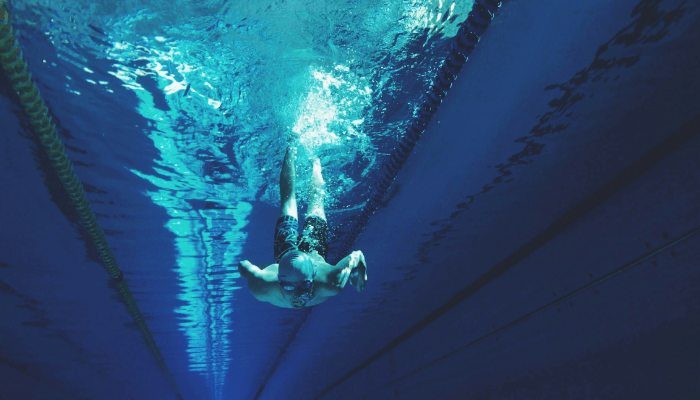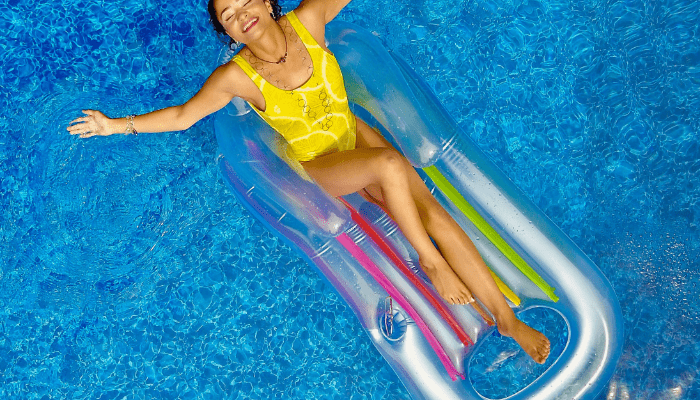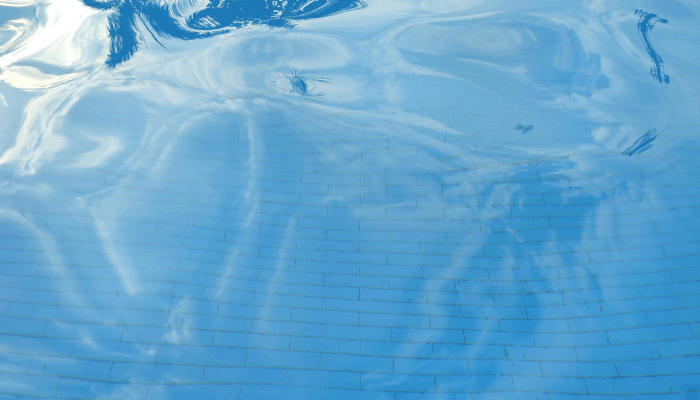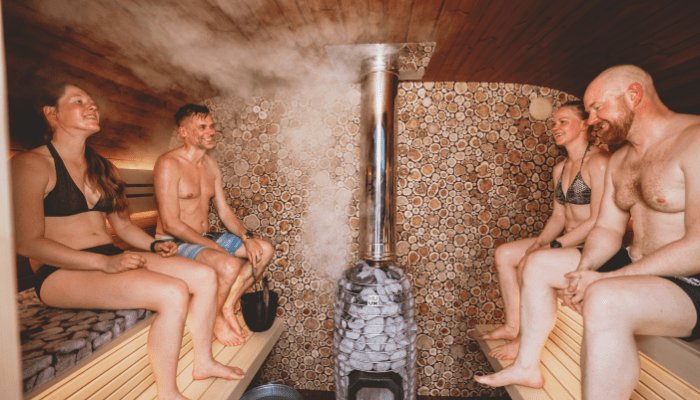Key Takeaways
Depth impacts safety, comfort, and maintenance.
Olympic pools are 3m+ deep for speed and performance.
Shallow pools (1.2-1.5m) are best for lounging and families.
Mid-depth (1.5-2.5m) suits lap swimming and fitness.
Deep pools (2.5m+) are required for diving and slides.
Deeper pools cost more to heat and maintain.
Multi-depth designs offer the most flexibility.
Choose depth based on how you plan to use the pool.

Most people don’t think twice about how deep a pool should be, until they realize they made a mistake. Too shallow, and you’re awkwardly scraping the bottom every time you try to swim. Too deep, and you’re stuck treading water like you’re in a survival exercise.
Depth matters. More than you think.
For example, did you know that Olympic pools are at least 3 meters deep? That’s not just for dramatic effect. Research from FINA (the governing body of swimming competitions) found that deeper pools create faster water, reducing turbulence and making it easier for swimmers to glide efficiently. On the flip side, backyard pools with excessive depth can triple your heating costs and make casual swimming uncomfortable.
So, what’s the perfect depth? That depends on what you want out of your pool. Are you looking for a lounging paradise, a family-friendly swim zone, or a serious training space? The right depth can make all the difference in safety, maintenance, usability, and long-term costs.
Let’s break it down. Because the last thing you want is to spend thousands on a pool that doesn’t fit your needs.

How Deep is Deep? Understanding Pool Depths
Not all pools are created equal, and depth is one of the biggest factors that can make or break your swimming experience. Too shallow? You’ll scrape your knees doing a dive. Too deep? You might find yourself treading water more than you’d like.
So, what actually counts as a deep pool?
- 1.2m – 1.5m (4ft – 5ft): Ideal for casual swimming, lounging, and pool games. Great for kids and adults who just want to relax.
- 1.8m – 2.5m (6ft – 8ft): The sweet spot for diving and serious swimming. Gives you the depth needed for jumps and underwater swimming.
- 3m+ (10ft+): Now we’re talking Olympic-level depth. This is the range for diving pools, high-performance swimming, and water sports.
Choosing the right depth matters. Too shallow, and you limit your pool’s use. Too deep, and you increase maintenance and heating costs.

Why Pool Depth Matters (More Than You Think)
If you’re building or buying a pool, depth isn’t just a random decision. It affects everything, from safety to energy costs to what you can actually do in the water.
Swimming Experience
- A shallow pool is great for floating and casual dips, but if you want to dive, practice strokes, or even install a slide, you need depth.
- Deeper pools allow for better underwater movement, smoother turns, and a more open swimming area.
Safety Considerations
- If kids will be using the pool, a depth of 1.2m – 1.5m is best for standing comfortably.
- For diving, you need at least 2.5m (8ft) to avoid injuries. Anything shallower is a no-go.
Heating & Maintenance Costs
- A deep pool holds more water, which means higher heating costs.
- Circulation and filtration require stronger pumps, making maintenance more expensive.
- More depth means more chemicals to keep the water balanced.
Bottom line: If you’re going deep, make sure you’re prepared for the extra costs and maintenance that come with it.

The Best Pool Depth for Different Activities
Different pools serve different purposes, and the right depth depends on how you plan to use it.
Casual Swimming & Lounging (1.2m – 1.5m)
- Perfect for relaxing, floating, and family use.
- Safe for kids and non-swimmers.
- Easy to heat and maintain.
Sports & Fitness Swimming (1.5m – 2.5m)
- Good for lap swimming, water aerobics, and sports like water polo.
- Ideal for competitive swimmers and training.
- Deep enough for safe underwater turns and strokes.
Diving & Water Slides (2.5m – 3.5m)
- The minimum depth for diving boards and slides.
- Gives a real swimming pool feel with room for jumps and flips.
High-Performance & Olympic Pools (3m – 5m+)
- Designed for diving competitions, synchronized swimming, and Olympic training.
- Requires stronger circulation systems.
- Not necessary for most home pools but great for professional training centers.
If you want to understand pool sizes click here.
How to Choose the Right Depth for Your Pool
Before you start digging, ask yourself these questions:
Who will be using the pool the most? (Kids? Athletes? Casual swimmers?)
Do you want to dive? (If yes, you need at least 2.5m depth.)
Are you concerned about heating costs? (Deeper pools = higher bills.)
Will you be playing sports? (Water polo and lap swimming need depth.)
Pro Tip: If you want both shallow and deep areas, consider a multi-depth pool. Many pools have a gradual slope or a deep-end design for maximum flexibility.

The Future of Deep Pools
Technology is changing the game. Modern deep pools are getting smarter, safer, and more efficient:
- Adjustable Depth Pools: Some pools change depth with hydraulic floors, perfect for multipurpose use.
- Self-Cleaning Systems: New filtration technology makes deep pools easier to maintain.
- Advanced Heating Solutions: Heat pumps and solar pool covers reduce heating costs.
Deep pools are no longer just for Olympians or luxury resorts. With the right planning, they can be a smart, fun, and practical choice for your home.

Conclusion: The Depth Decision
Pool depth isn’t just about how much water you can fit in a hole. It defines everything: how you swim, how much you spend on heating, how safe it is, and how much you’ll actually enjoy it.
If you only plan to float around with a drink in hand, there’s no need to go deeper than 1.2 to 1.5 meters. If you want to swim laps, practice strokes, or train, you’ll need at least 1.8 to 2.5 meters. And if diving is part of the dream, you’re looking at a minimum of 2.5 to 3 meters, or risk turning a fun jump into a painful mistake.
But here’s the thing: you don’t have to choose just one depth. Many pools are designed with multi-depth zones, giving you the best of both worlds, a shallow end for lounging and a deep end for swimming.
The key takeaway? Match your pool’s depth to your lifestyle, not just your budget. A pool is an investment, and once it’s built, there’s no going back. So think it through. A well-planned pool works for you, not the other way around.
Planning a deep pool? Make sure it’s not a deep mistake.
At Oásis Biosistema, we design custom, regenerative pools that fit your lifestyle, and your depth needs. Whether you’re after a safe swim zone for the kids, a pro-level training space, or a multi-depth design that does it all, we’ll help you get it right from the start.
Request your free quote today and build smarter, not deeper.
FAQ
What is the deep pool?
A deep pool is a swimming pool with a greater-than-average depth, typically over 6 feet, designed for diving, training, or recreation.
What is the maximum depth of a swimming pool?
Most residential pools are up to 8 feet deep, while Olympic pools reach 10 feet. The deepest pool, Deep Dive Dubai, is 196 feet.
What is the average deep pool?
A typical deep end in residential pools is around 6 to 8 feet, while public and competition pools may be deeper.
How much does the deepest pool cost?
Deep Dive Dubai, the world’s deepest pool, reportedly cost over $10 million to build.
What is considered deep for a pool?
A pool is considered deep if it exceeds 6 feet, which is the usual depth limit for casual swimming and safety.
What is the meaning of deep pool?
A deep pool refers to a swimming pool with significant depth, often designed for diving, advanced training, or recreational deep-water activities.
Is it harder to swim in a deep pool?
No, swimming is not harder in a deep pool, but beginners may feel less secure due to the lack of a shallow standing area.
Why do people like deep pools?
Deep pools allow for diving, underwater activities, and a more open swimming experience, often preferred for training and relaxation.



